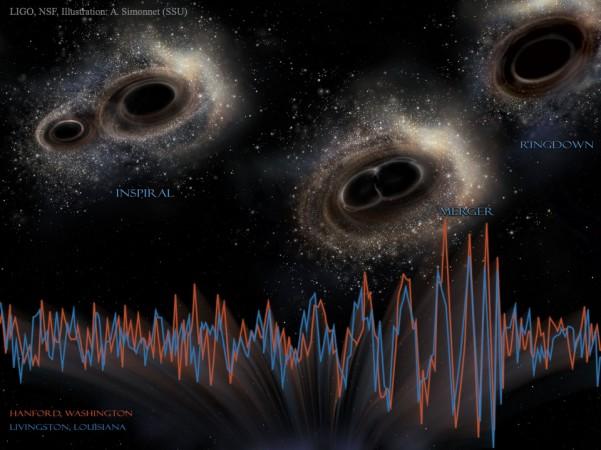
A set of gravitational waves was detected by Advanced Laser Interferometer Gravitational-Wave Observatory (LIGO) on January 4. Revelations about this finding were made earlier on May 31.
Also Read: NASA's Curiosity rover discovers diverse environment on Mars
This finding is defined as one of the strongest astronomical events spectated by mankind so far. The gravitational waves analysed in the research originated from two black holes which were more massive than Sun, weighing 19 and 31 solar masses fused into a massive black hole at a distance of approximately 3 billion light-years from Earth.
The merged black holes' mass was approximately 49 times more massive than the Sun, Tech You N Me reported.
The first detection of gravitational waves was made by LIGO on September 14, 2015, when the black holes analysed by the observatory were even bigger, possessing the mass of around 29 and 36 times greater than that of the Sun.
The second detection of gravitational waves was made by LIGO was on December 26, 2015, when the black holes were less massive than the black holes examined for the first time; their masses were around 8 and 14 times Sun's mass, as per a Tech You N Me report.
Gravitational waves were predicted by Albert Einstein a century ago, in 1915, in his general theory of relativity and researchers have been trying to identify these waves past 50 years.
According to Einstein's general theory of relativity -- the massive accelerating objects like neutron stars or black holes that orbit each other could dislocate space-time. This could make the waves radiate from the source. The waves would also travel at the speed of light in the universe, as stated by Science World Report.
The gravitational waves are ripples present in the curvature of spacetime which triggered by some energetic and most violent processes in the universe, which includes phenomenon like merging black holes, collapse of supernovae, which are stellar cores and merging of neutron stars or white dwarf stars.









!['Had denied Housefull franchise as they wanted me to wear a bikini': Tia Bajpai on turning down bold scripts [Exclusive]](https://data1.ibtimes.co.in/en/full/806605/had-denied-housefull-franchise-they-wanted-me-wear-bikini-tia-bajpai-turning-down-bold.png?w=220&h=138)



